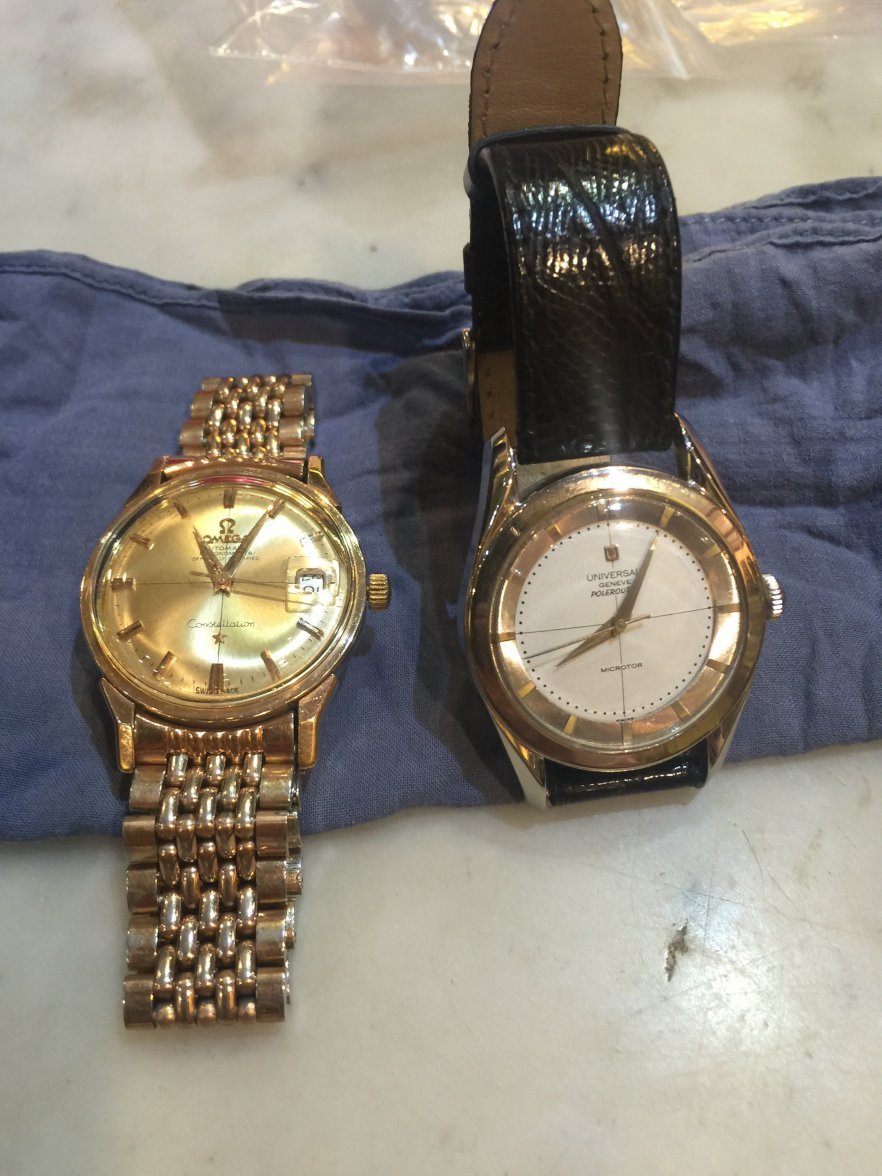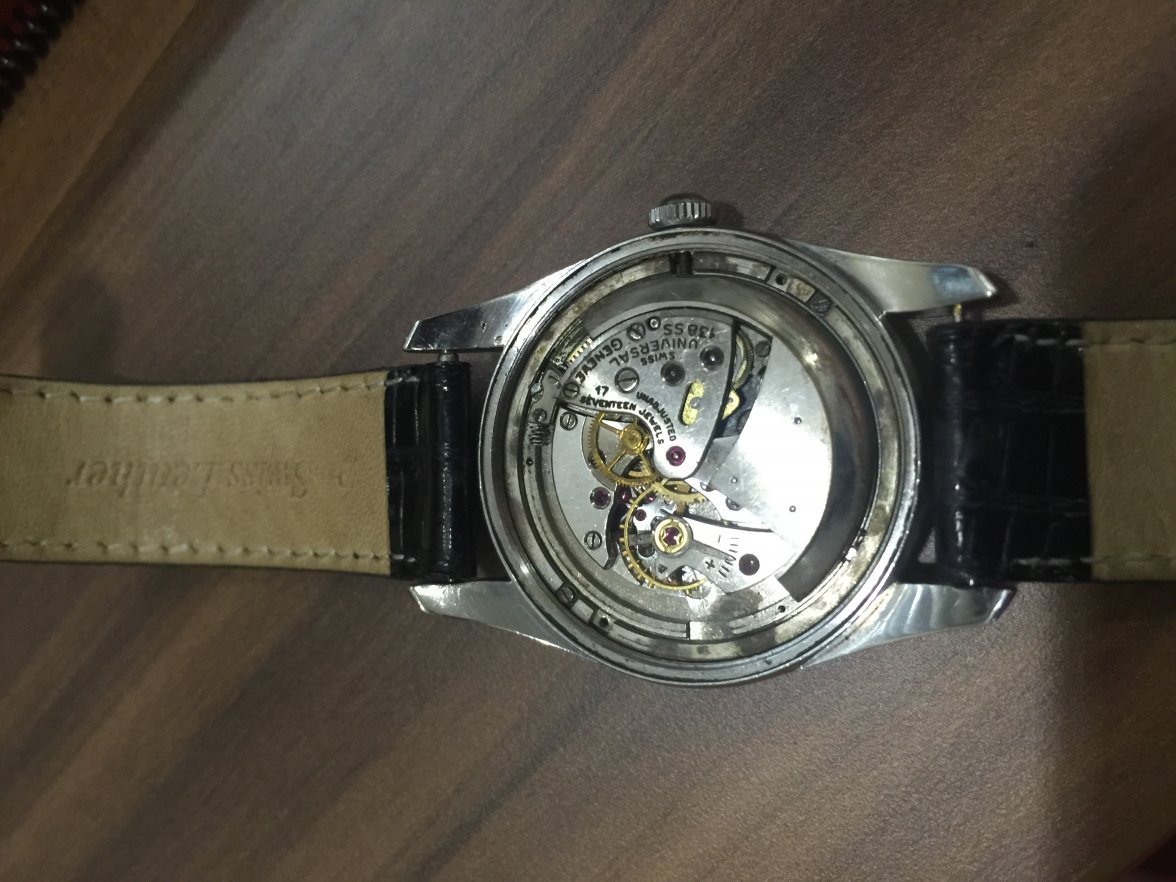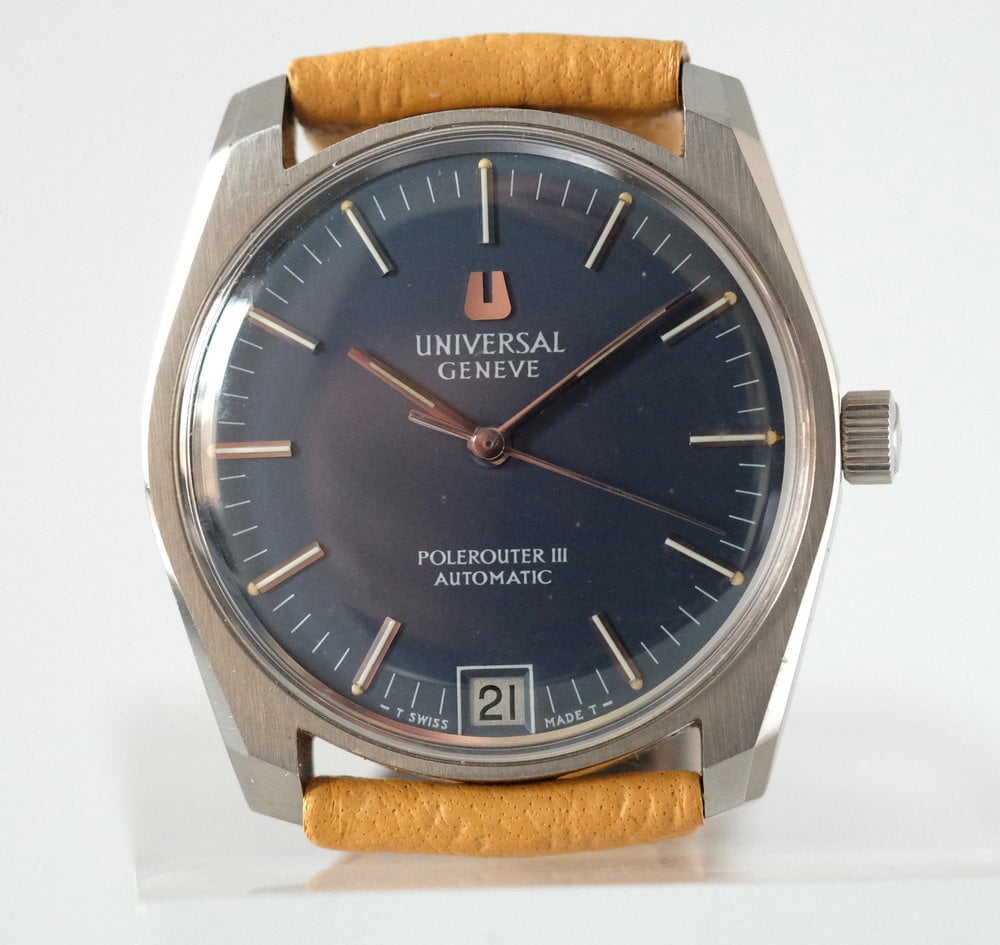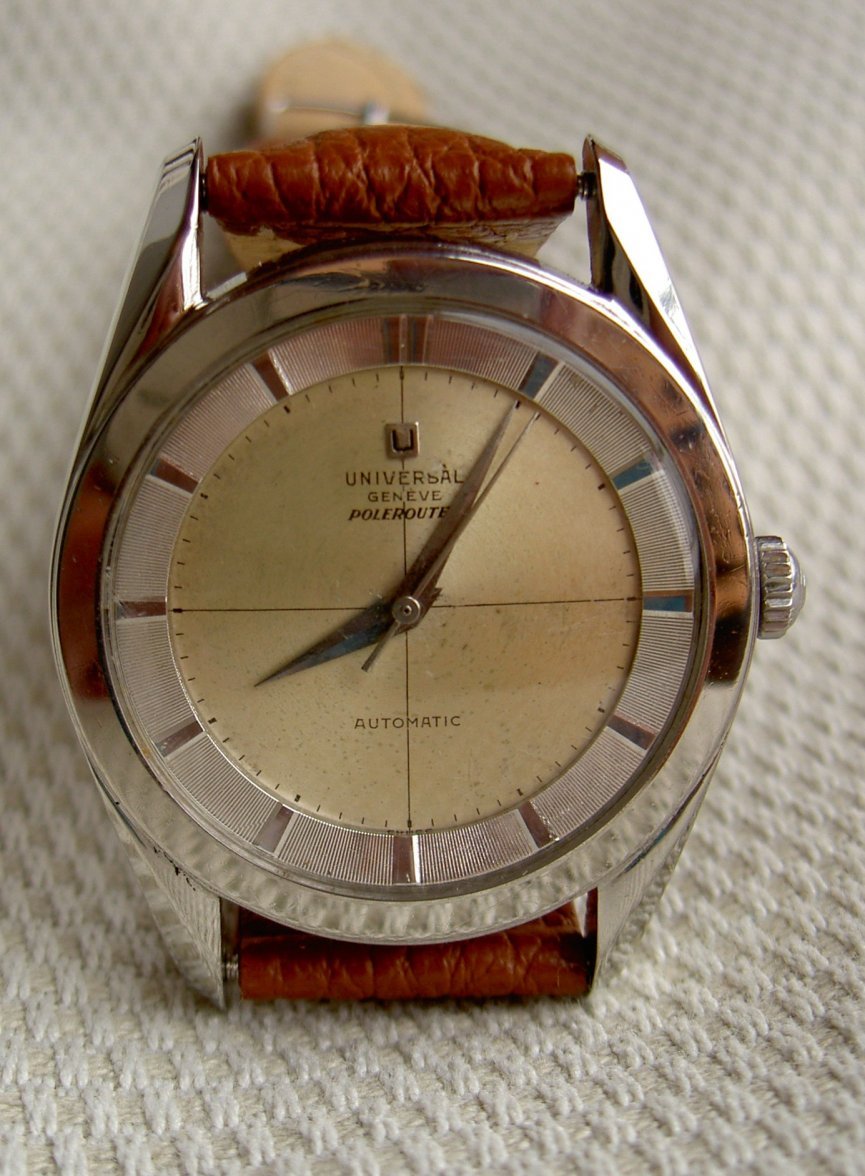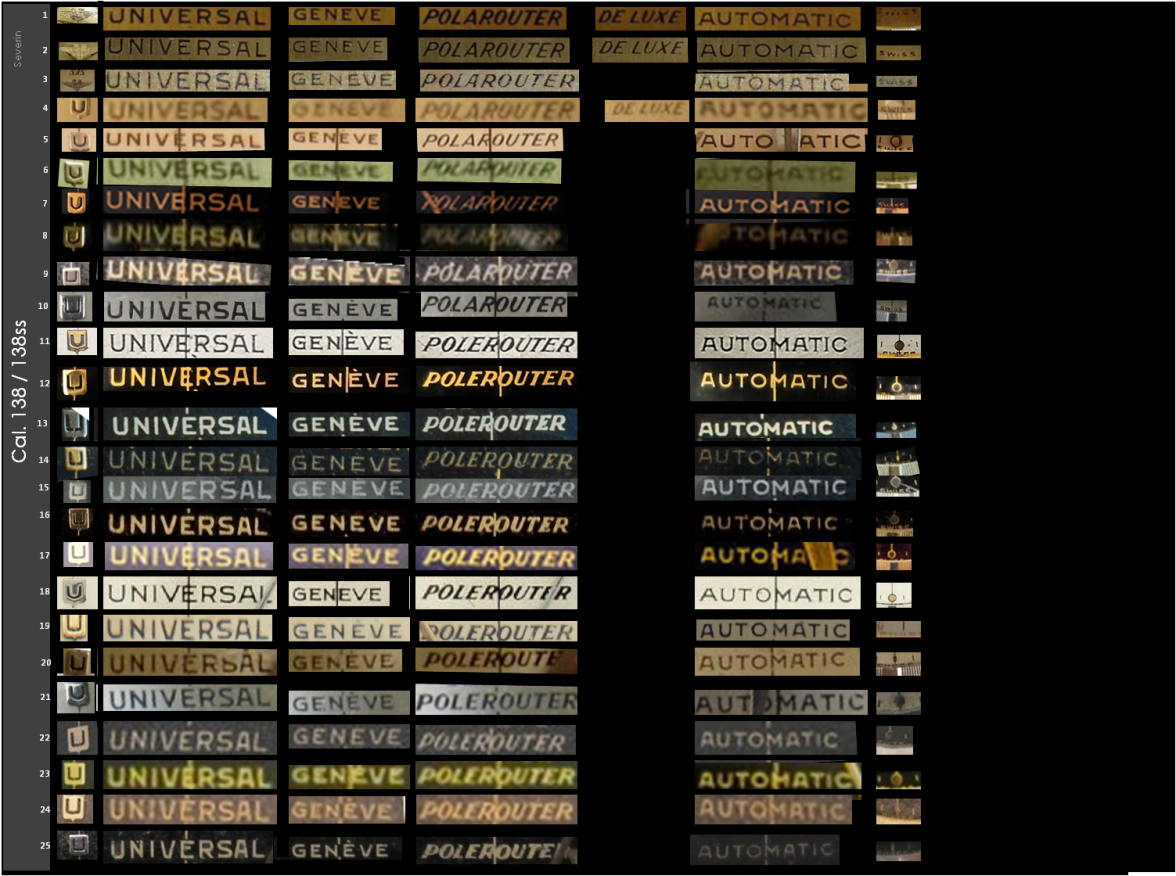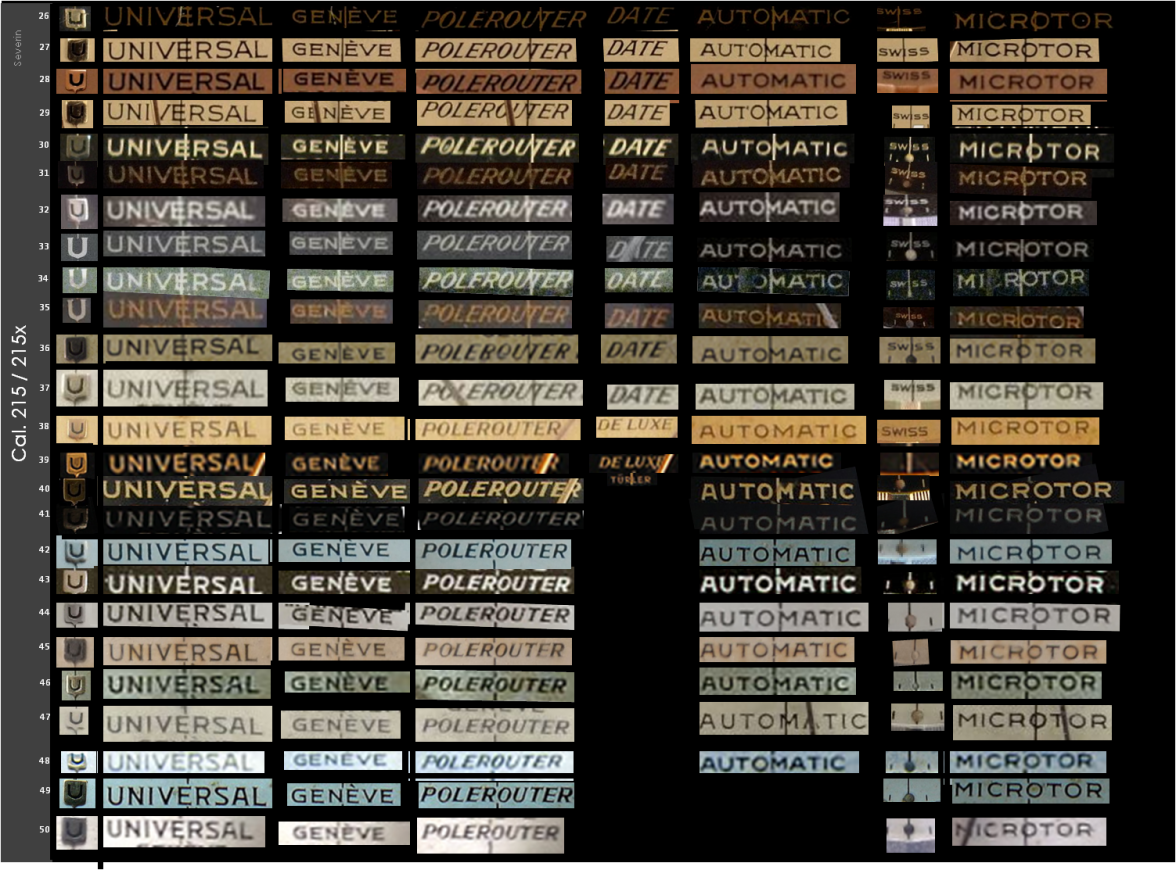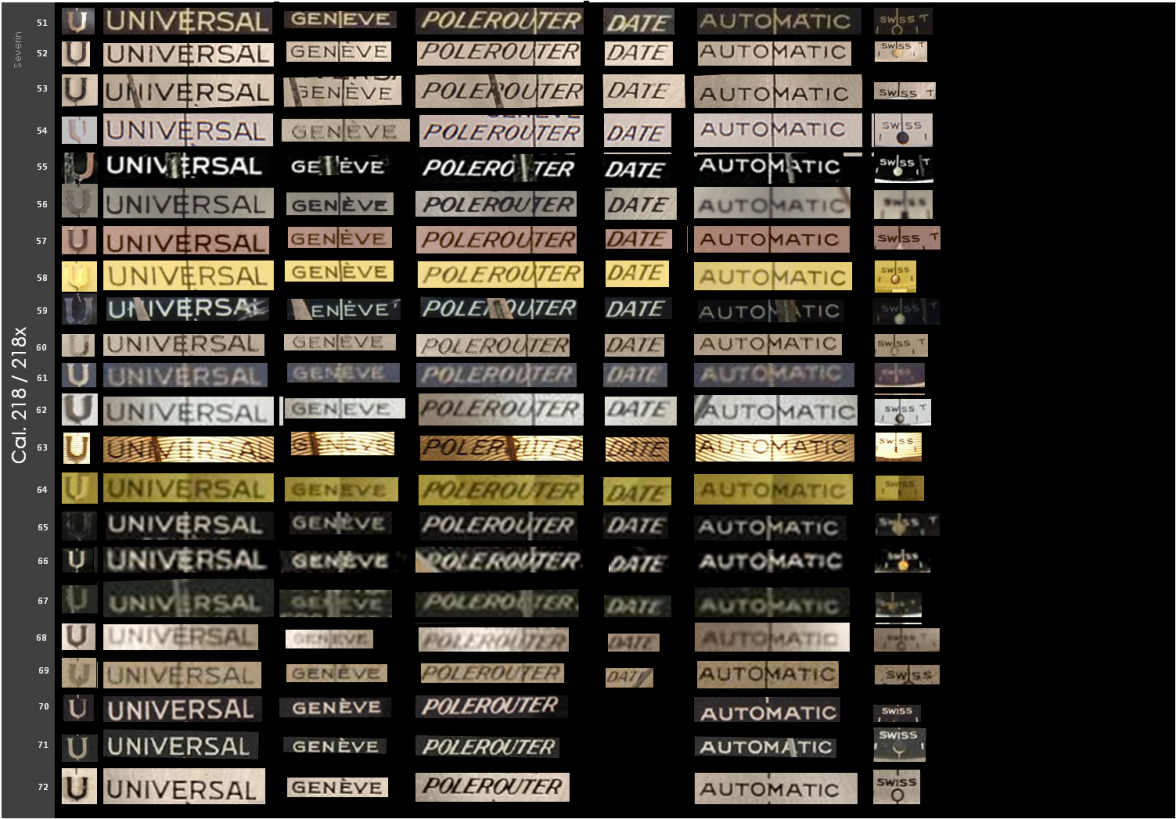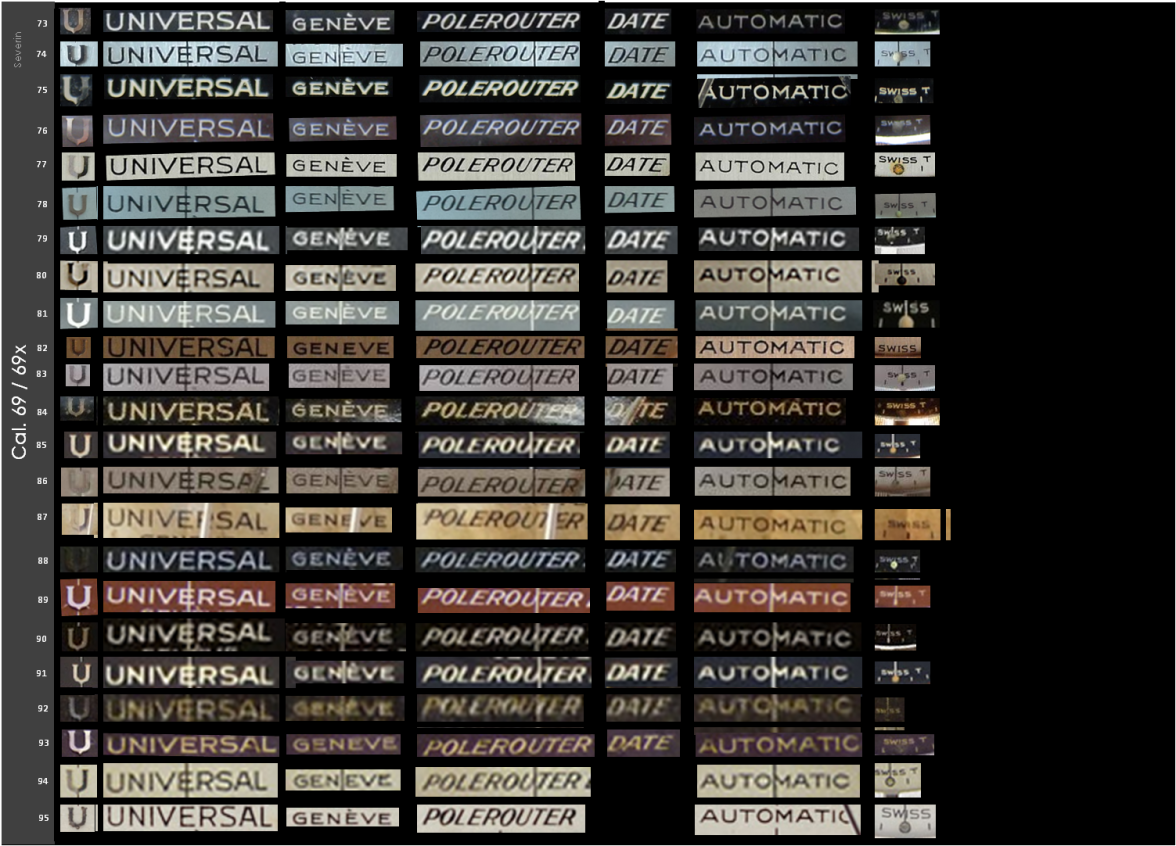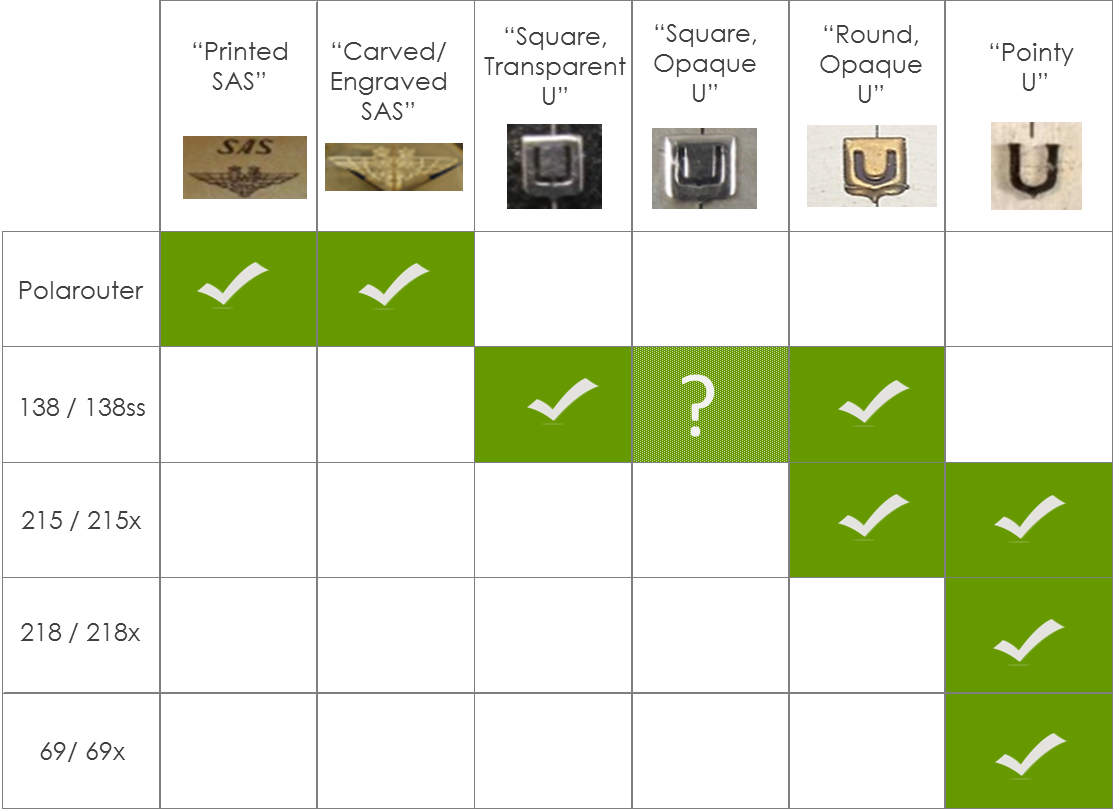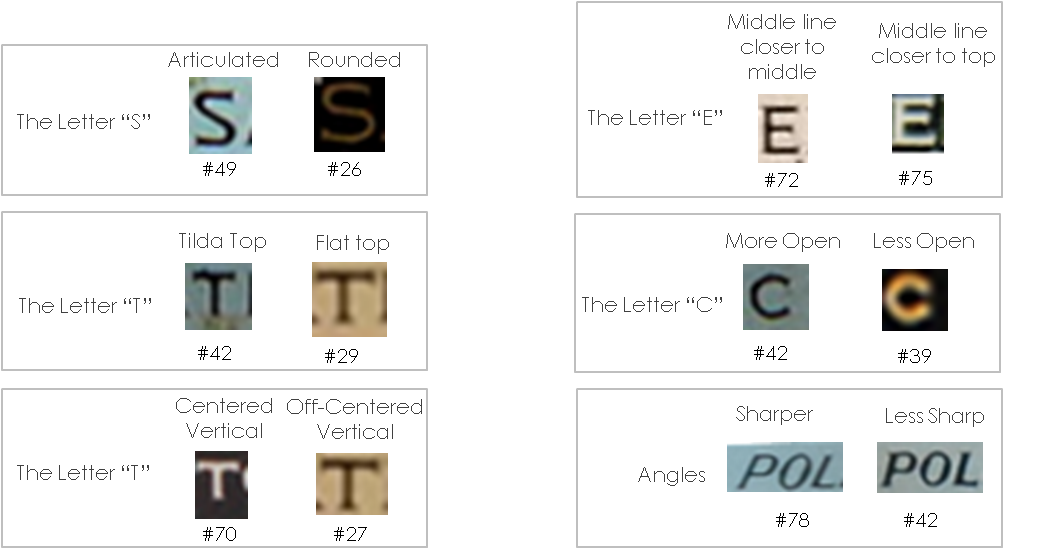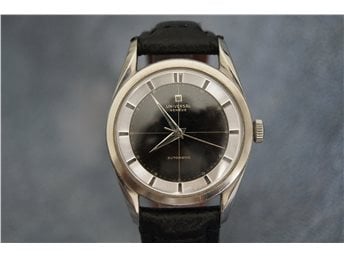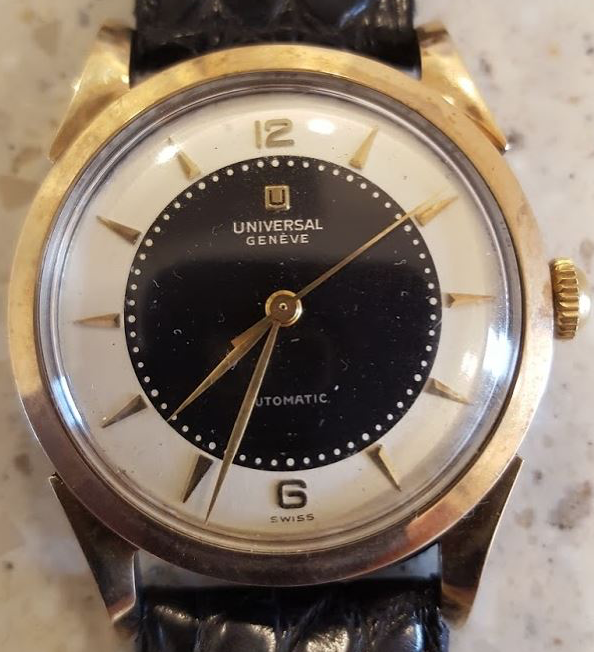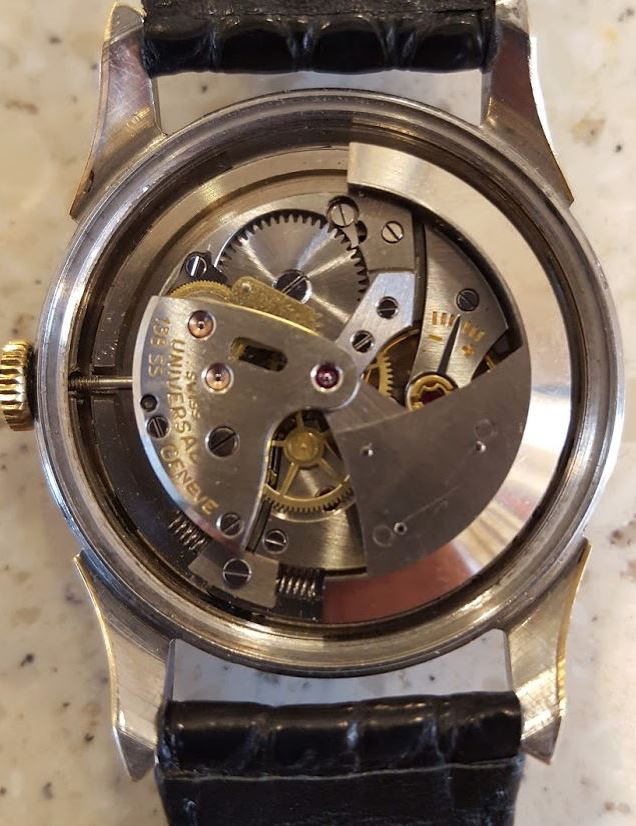Interpreting the world of Polerouter dials can be a daunting task for novice enthusiasts such as me. The overall challenge stems from at least five factors: (a) diversity of dial designs, (b) variety in execution, (c) limited availability of official or otherwise definitive reference materials, (d) poor survival rate of engraved serial numbers on non-bumper cases and (e) prevalence of redials, including some good ones. While these factors can add to the challenge of separating fact from fiction, they are also part of what makes Polerouter-spotting so much fun.
To help me learn more about Polerouters, I’ve compiled a small set of sample dials which I extracted from photographs found on the internet. I present that sample set to you below for reference and hope you will find it useful. The sample set includes Polarouters, Polerouters and Polerouter Dates which, for convenience, I will collectively refer to here as “Polerouters”. It does not address other three-handed models such as Geneves, Jets, Supers, Subs, Electrics, etc. My initial focus is on Polerouter text, including shields. As such, the sample set includes all shields and text found on those Polerouter dials I was able to find online and which had some modicum of visual clarity (unfortunately, as I’ve mentioned elsewhere, the photos on polerouer.de were far too fuzzy for me to use here) . I’ve broadly organized the samples according to movement “family”.
With the exception of logos/shields and the words “Swiss” or “Swiss T”, each row is more or less to scale with itself. I say “more or less” because many of the donor photos were taken from angles - this means that the internal scale-relativity of each row should be taken with some degree of salt. While I’ve tried to catch only what I suspect to be “unrestored” dials (especially difficult for me in the area of bumper models), I cannot guarantee that a redial or two did not sneak its way into the mix. Another caveat: I attributed the samples to caliber family based largely on the poster’s/seller’s own caliber identification and, where available, on my own visual inspection of the movement photo. This might have introduced some error in cases where the poster mis-identified a movement which I was unable to verify - if at all an issue, I expect it would be mostly (if not entirely) between the Cal. 218 and 69 families as their dials look very similar.
All that said, I had a lot of fun compiling the sample set below and hope you will have fun checking it out. I’ll be very interested to hear any observations you might have and look forward to hearing from you. In the meantime, I’ve jotted a few of my own observations for discussion. Those observations are found immediately below the sample set and apply only to the sample set at hand (i.e. I don’t claim these to be “Universal” truths).
Sample Set:
Some preliminary observations for discussion:
A.
On logos/shields:
Five or six logos/shields are evident and can be somewhat correlated to caliber (see table below):
1. A printed SAS logo, appears on the Polarouter
2. A carved/engraved SAS logo, also appears on the Polarouter [edit: removed term "applied", added "carved/engraved"]]
3. The third shield/logo appears on Cal. 138/138ss models (including the Polarouter) and consists of a shield with a square-ish cut-out letter “U”. Because the U is cut-out from the shield, one can see the dial and crosshair through the shield. For this reason, I refer to this shield as a “Square, Transparent U” (“STU”).
4. The fourth shield is still a bit of an open question as far as I am concerned: it is similar to the third shield insofar as it features a square U, but differs in that its U is opaque and perhaps the overall shield is more “bulbous”/”phat” than the previous example (which appears more flat). I refer to this as the “Square, Opaque U” (“SOU”). I am still on the fence on this one because I am not sure whether the opacity is actually due to dirt/grime/scudge. This shield appears on one Cal. 138/138ss (Polarouter) model in the sample set above (see reference #10) and can be seen on some bumpers on the polerouter.de website, including the following:
http://www.polerouter.de/images/collection/polerouter39-big.jpg
http://www.polerouter.de/images/collection/polerouter63-big.jpg
http://www.polerouter.de/images/collection/polerouter33-big.jpg
5. The fifth shield features a rounded, opaque U and I refer to it as “Round, Opaque U” (“ROU”). It can be found on 138/138ss and 215/215x models.
6. The sixth shield is what
@LouS has elsewhere called a “Pointy U”. It can be found on Cal. 215/215x, 218/218x and 69/69x models.
[edit: the following table updated to reflect feedback below from
@styggpyggeno1 ]
B. On the term “Swiss”:
1. The term “T Swiss T” does not appear on any of the samples.
2. Bumper models feature the term “Swiss” (not “Swiss T”)
3. On bumper models that have minute markers, the term “Swiss” is located below the minute markers, snug to the chapter ring.
4. On bumper models that do not have minute markers, the term “Swiss” is located less snug to the chapter ring, approximately at or above where the minute marker or lume dot might otherwise have been.
5. Some 215/215x models have the term “Swiss”, some do not.
6. The term “Swiss” tends to appear on 215/215x models that have a date function. Non-date models do not have the term “Swiss”.
7. Either of the terms “Swiss” or “Swiss T” appear on Cal. 218/218x models. In either instance, the “Swiss” or “Swiss T” is located at or above the minute marker/lume dot. There does not appear to be any correlation between date/non-date models and the presence of either “Swiss” or “Swiss T”.
8. As above, Cal. 69/69x models all feature some version of “Swiss” or “Swiss T” and there does not appear to be any obvious correlation with date vs. non-date models.
C. On the term “Microtor”
1. As many of you probably already know, the term “Microtor” only appears on Cal. 215/215x models
D. On Serifs:
1. On all models, bumper and non-bumper, the terms “Polerouter”, “Date”, “Automatic” and “Microtor” are serifed.
2. On non-bumper models, the words “Universal” and “Geneve” are serifed.
3. On bumper models, the words “Universal” and “Geneve” are usually sans-serif. Again, example #10 may provide the exception: fonts on example #10 (a Polarouter) may be of a mild serif variety - I’m not sure. Example #18 is from a Polerouter bumper and may be another example of a mild serif.
4. Serif or not, the terms “Universal” and “Geneve” generally have a “blockier” feel on bumper models than on subsequent models.
5. The words “Polarouter” are sometimes serifed, sometimes not.
E. On the letter “A”:
1. The sample set reinforces the observation made by others on this forum that the Letter A is always flat-topped on Polerouter models (i.e. non-Polarouters)
2. A peaked/pointy-topped A is found on Polarouters, and only in the word “Polarouter”
3. I’m not sure whether this is real or not, but it appears than not all Polarouters feature a pointy-topped “A” in the word Polarouter: example #3 is a Polarouter and it features a flat-topped letter “A” in the word Polarouter.
F. On the accent grave:
1. The sample set echoes the observation I’ve made previously on this Forum that some dials have an accent grave over the “E” in the word “Genève” while others do not. The presence or absence of the accent grave does not appear to be correlated with movement caliber in the Cal. 69, 218 and Polerouter 138 families.
2. It appears, however, as if the accent grave does not appear on any of the Polarouters in the sample set
3. It also appears that the accent grave is present on all Cal. 215/215x dials in the sample set. This is generally in line with what I have found previously, with one exception: I had previously though I spotted one Cal. 215x model without an accent grave: my eyes may or may not have fooled me (check it out and let me know what you think:
http://s431.photobucket.com/user/Frans1953/media/Pole router/Polerouter215front.jpg.html)
G. On execution variety:
1. Letters found on Polarouter/Polerouter dials come in a range of variants. For instance, as shown in the figure below
a. The letter “S” can be bent/articulated like a pipe or rounded
b. The top of the letter “T” can slope like a tilda or be straight
c. The vertical line in the letter “T” can be centered relative to the horizontal line, or off-centered
d. The middle horizontal line in the letter “E” can be vertically closer to the middle of the letter’s height or closer to the top
e. The letter “C” can be nearly closed or fairly wide open
f. The type can be angled more sharply (i.e. closer to 60 degrees) or less sharply (i.e. closer to 70/75 degrees)
I’m splitting hairs at this point, but the list does go on...
In closing, I hope you will find the above sample set of some interest and I thank you for listening. I look forward to hearing from you - whether to confirm some of the above observations, to challenge or debunk them, to offer new observations, to identify future areas for focus, etc.
This work is largely inspired by the amazing discussions I’ve read on this forum, including a variety of “typology”-type entries such as on Polerouter Subs, Polerouter cross-hairs, UG shields, UG Chronographs, Longines, Majetek and others. I’ve found these and other Forum discussions highly informative and a lot of fun - thank you all.
